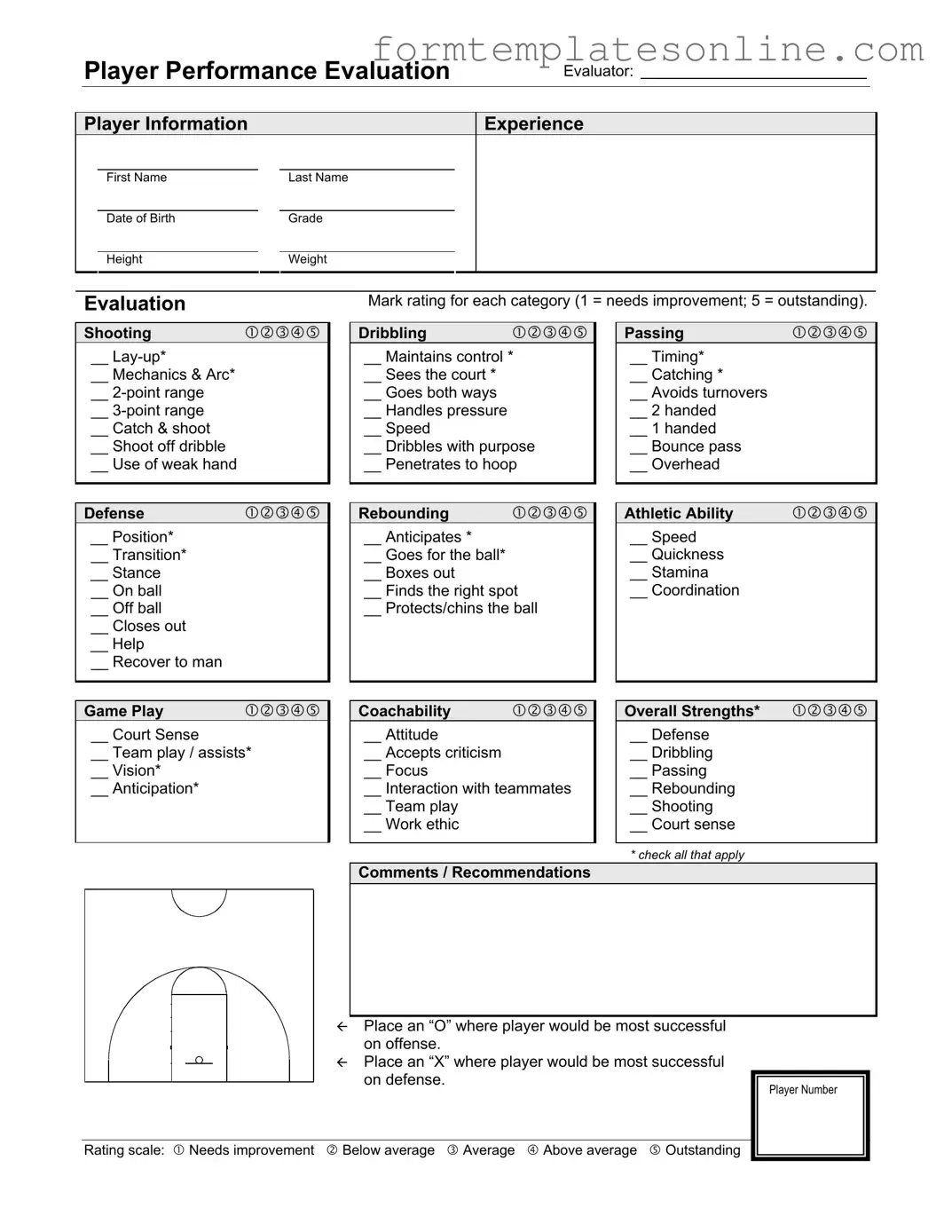What is the purpose of the Basketball Evaluation Form?
The Basketball Evaluation Form is designed to assess a player's skills and performance in various areas of the game. It provides a structured way to evaluate essential skills such as shooting, defense, dribbling, passing, and athletic ability. Coaches and evaluators use this form to identify strengths and areas for improvement, ultimately helping players develop their skills and enhance their performance on the court.
How is the evaluation conducted?
The evaluation is typically conducted by a coach or an experienced evaluator who observes the player during practice or a game. Each skill category is rated on a scale from 1 to 5, where 1 indicates a need for improvement and 5 signifies outstanding performance. Evaluators will also provide comments and recommendations based on their observations, offering valuable insights into the player's abilities and potential.
What categories are included in the evaluation?
The evaluation covers multiple categories, including shooting, defense, dribbling, passing, athletic ability, and game play. Each category is further broken down into specific skills, such as shooting mechanics, on-ball defense, and court sense. This comprehensive approach ensures that all aspects of a player's performance are considered, providing a well-rounded assessment.
How can players benefit from the evaluation results?
Players can gain significant insights from the evaluation results. By understanding their strengths and weaknesses, they can focus on specific areas for improvement. The feedback provided can guide training sessions, helping players develop targeted skills. Additionally, knowing where they excel can boost a player's confidence and motivate them to continue improving.
Who should use the Basketball Evaluation Form?
The Basketball Evaluation Form is beneficial for coaches, evaluators, and players themselves. Coaches can use it to track player development over time and make informed decisions about team placements. Evaluators can provide objective assessments to help players improve. Players can also use the feedback to self-reflect and set personal goals for their basketball journey.

